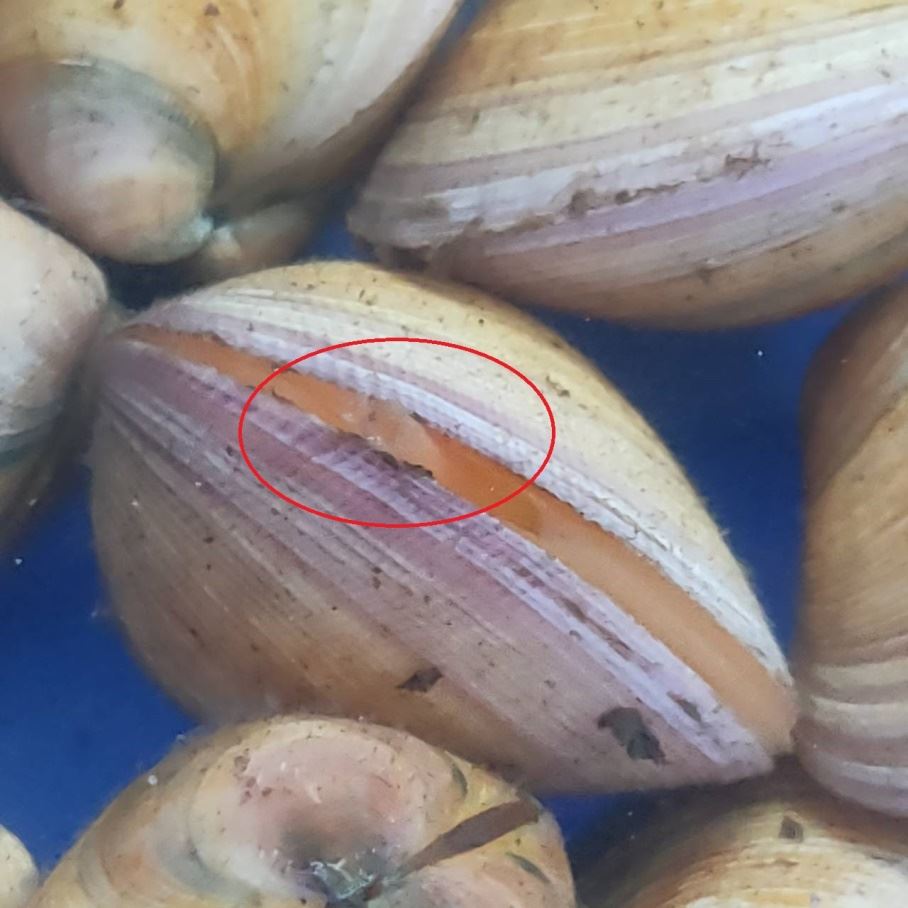News
Successful artificial breeding of Cyclina sinensis adds another member to shellfish restoration
- PostDate:2021-01-06
The demand for Cyclina sinensis has increased in recent years due to market fluctuation in the clam culture industry. Commercial Cyclina sinensis are caught by fishermen by the sea, but their output is small. In response to the demand for Cyclina sinensis from the aquaculture industry, the Fisheries Research Institute, Council of Agriculture successfully developed artificial reproduction technology for Cyclina sinensis seedlings to add a new member to the shellfish culture industry, thus now providing a source of seedlings for resource restoration.
According to the Fisheries Research Institute, Cyclina sinensis belongs to the family Veneridae and the genus Cyclina, and only one species of Cyclina sinensis is recorded in Taiwan. Cyclina sinensis has a yellow-brown round shell with a purple ring around the shell edge. The axe feet as well as the water inlet and outlet pipes at the front of the meat are red, and so it is commonly known as the red mouth. It mainly inhabits estuaries or shallow sandy areas and can be seen in lagoons, shoals, and intertidal zones in the western half of Taiwan. Cyclina sinensis currently sold in the market are all caught by fishermen with clam rakes at the seaside after low tide, but their output is not high. In recent years, instability of the clam culture industry has led to rising prices, while demand for Cyclina sinensis has also increased, as its sales price has risen from the original price of NT$30 to NT$50 per 0.6kg. Some clam farmers have begun to include Cyclina sinensis as an alternative to clams.
In addition to being edible, Cyclina sinensis has a strong tolerance to the environment and a special status in ecology and environmental protection. The change in its resources can be used as a reference for environmental assessment. Moreover, because of its special harvesting method, it has become a hot spot for the development of tourism and recreational fishery. Cyclina sinensis has attracted the attention of local governments, which often ask the Fisheries Research Institute to increase the amount of available resources.
In response to the needs of the aquaculture industry and resource restoration, the Mariculture Research Center of Fisheries Research Institute has actively invested in the research of artificial propagation of Cyclina sinensis and has successfully established related technologies. It is expected to produce 2 million seedlings for release, further increasing the resources of Cyclina sinensis in the coastal and offshore areas of western Taiwan.

Adult Cyclina sinensis

Junenile Cyclina sinensis

The outlet pipe of Cyclina sinensis is red
Mariculture Research Center, Fisheries Research Institute, Council of Agriculture, Executive Yuan



